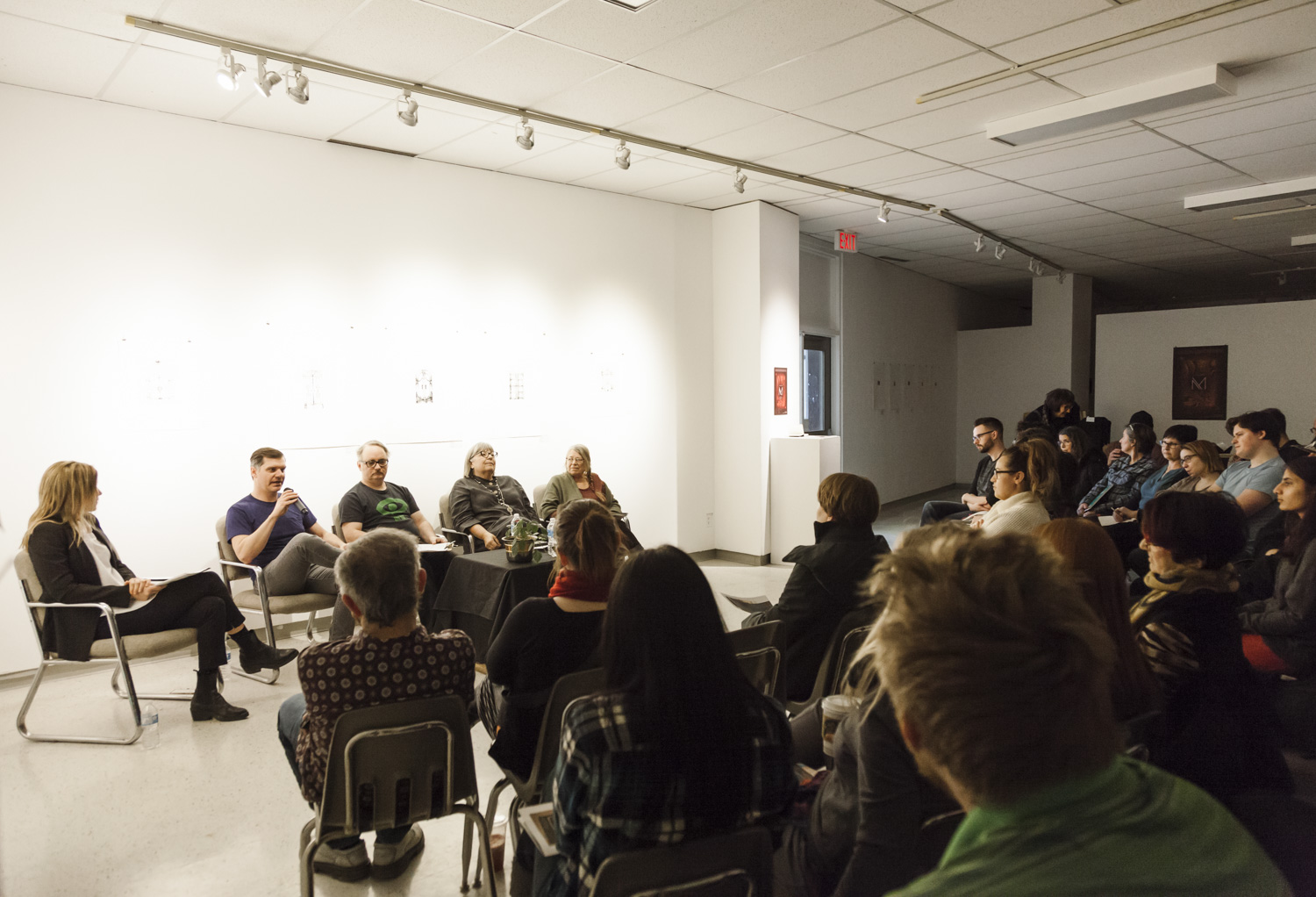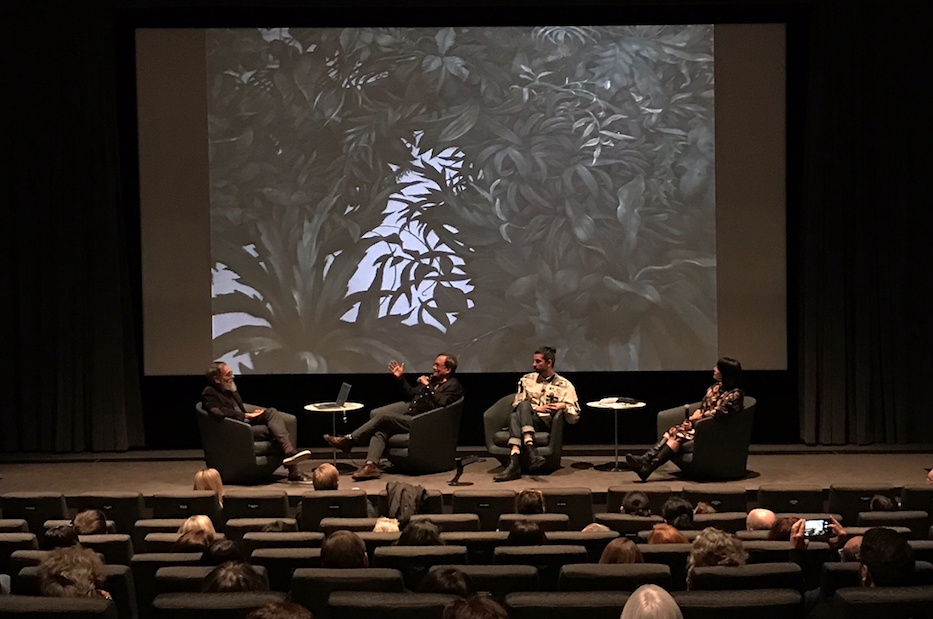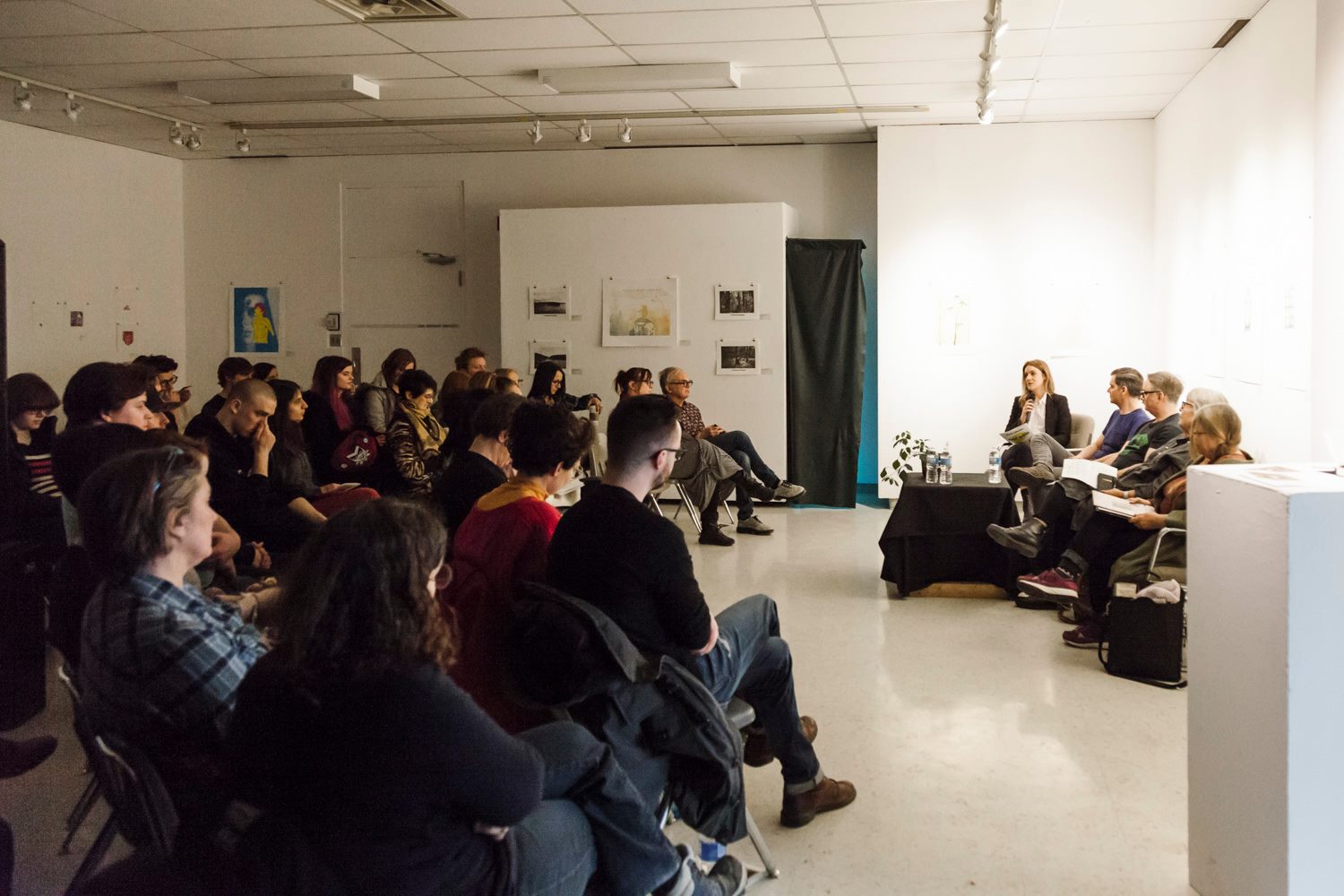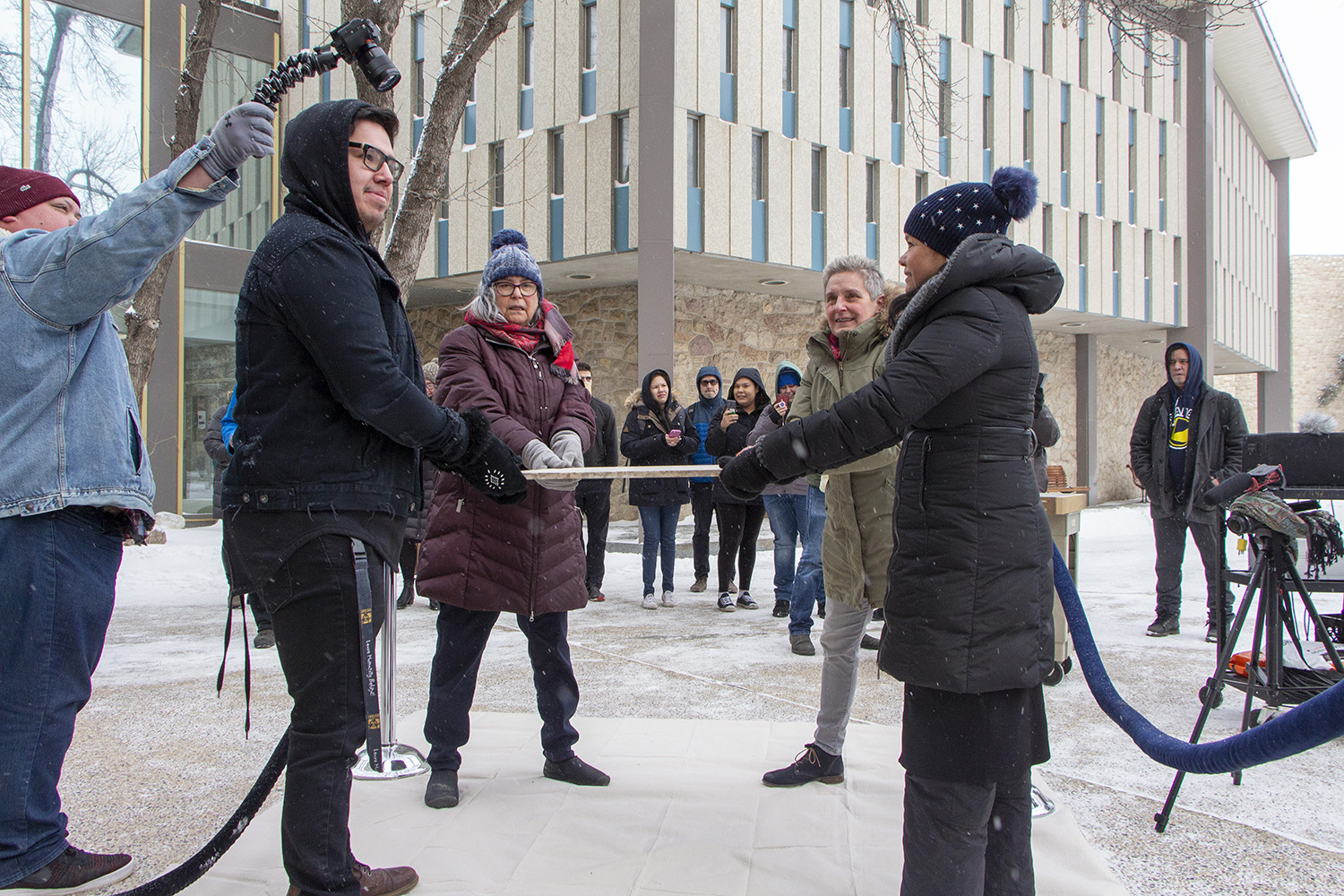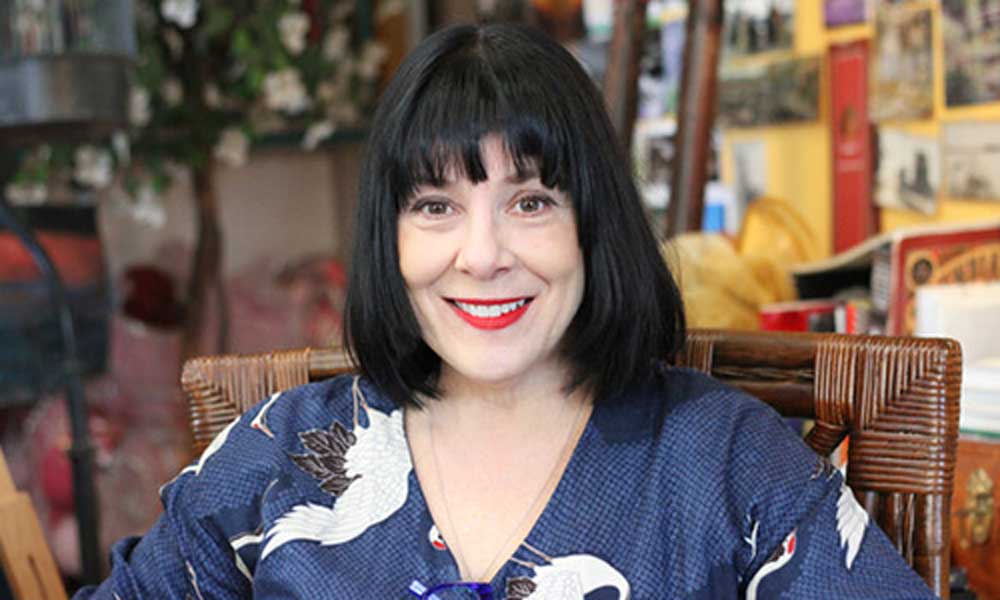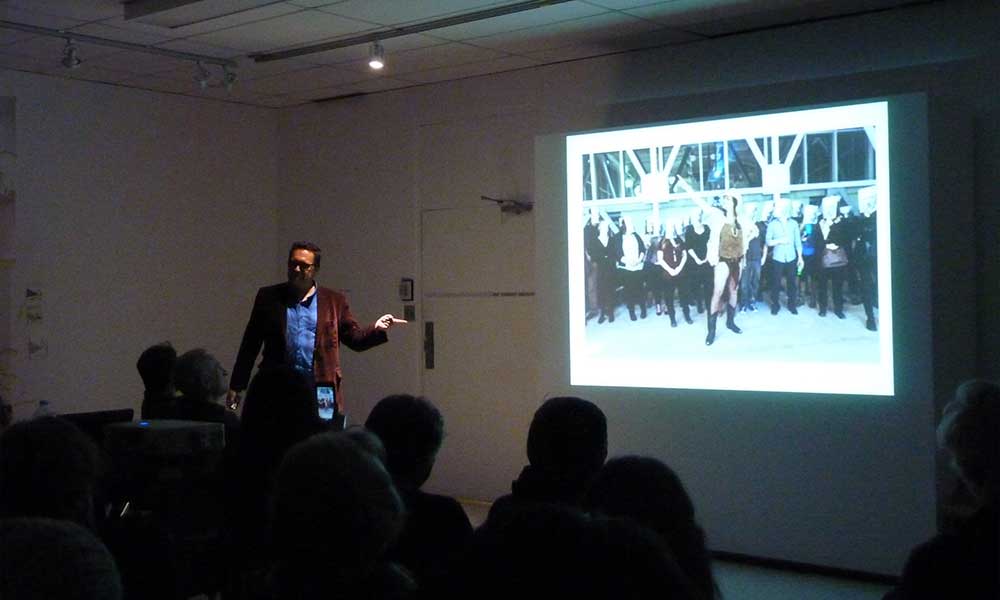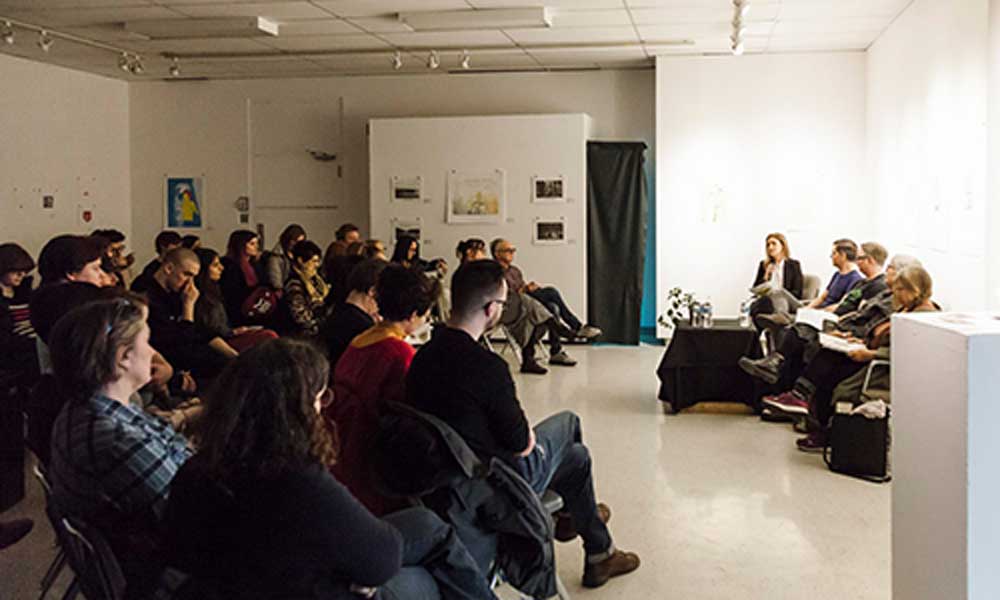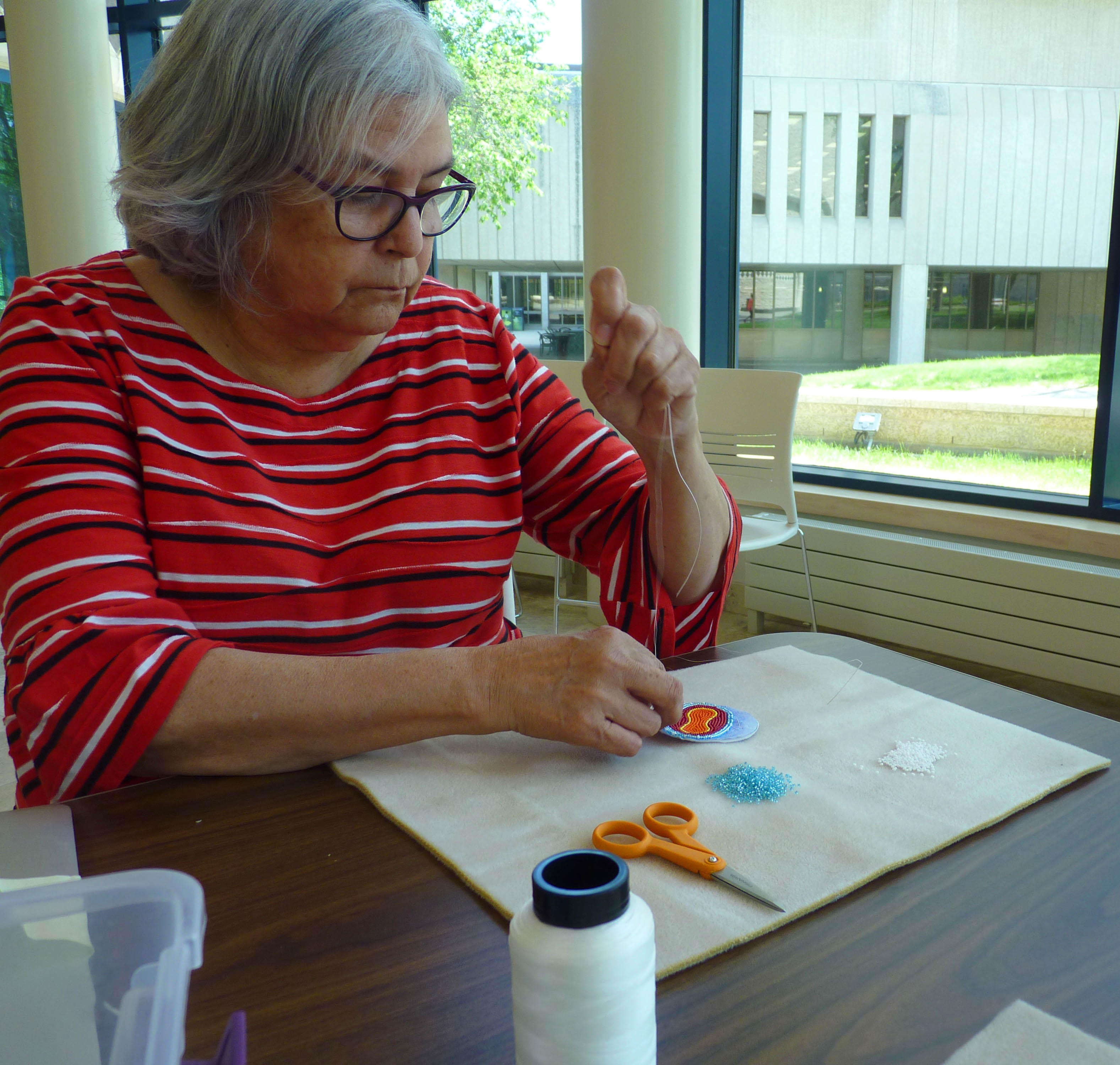Research, Teaching and Learning
“The art galleries and collection are among our university’s richest cultural and educational resources. [They provide] us with a path to deeper engagement with Indigenous peoples and perspectives, greater opportunities for our students and closer ties to our community.”
—Dr. Peta Bonham-Smith, Former Dean, College of Arts & Science
The University of Saskatchewan Art Galleries and Collection exemplify a creative vision aligned with the university’s mission of interdisciplinary research and community-engaged scholarship. Through our changing showcase of exhibitions, events, curatorial exchanges, collaborations and artist residencies, we connect communities on campus and beyond. Our priority is to open access to interdisciplinary teaching and research interests that encourage new ways of seeing. As such, we seek partnerships with faculty across disciplines to realize the potential of the galleries as a site for formal and informal teaching and learning.
Our role as part of a vibrant research university grants the academic freedom to be risk-takers who are curatorially independent and responsive to evolving social issues and artistic trends. Artists and art galleries play an important role as cultural change agents by listening to diverse voices, engaging with challenging contemporary issues and connecting with audiences in ways that open minds and inspire action. Our curators support emerging artists and divergent views, in exhibitions such as:
- Curtis Santiago: Constructing Return (2017) and Tau Lewis: when you last found me here (2019), which explore the diasporic experience through powerful works created in Canada, the United States, Trinidad, Jamaica and South Africa.
- A 2017 cultural exchange with faculty and students at Hubei University in China that resulted in an artist residency and exhibition by renowned printmaker Zhang Guang Hui.
We are increasingly looking beyond campus to form partnerships and collaborations. With one of the highest populations of Indigenous students among Canadian post-secondary institutions, the University of Saskatchewan particularly fosters Indigenous student success. Indigenous representation and engagement are essential to our approach to visual arts. As such, we welcome partnerships with Indigenous arts organizations and artists. Examples include:
- Writing on the Wall (2019), in partnership with Wanuskewin Heritage Park Gallery, which examined the work and career of Indigenous artist Joane Cardinal-Schubert.
- Joi T. Arcand: she used to want to be a ballerina (2019), an exhibition that featured diverse work by an emerging artist from Muskeg Lake Cree Nation in central Saskatchewan who celebrates Indigenous cultures and challenges the way language is privileged.
- Mixing Stars and Sand: The Art & Legacy of Sarain Stump as part of a provincial exchange with the MacKenzie Art Gallery in Regina (2018). The retrospective exhibition provided historical context of a non-native artist who, through his teaching and activism, inspired a renaissance of Indigenous art in Saskatchewan.
Exhibitions curated from the University of Saskatchewan Art Collection, such as Re(Visit): Interpreting the Collection (2016) and The Other Emma (2019), create new dialogues between works, examining their underpinnings within historical movements and contemporary contexts.
Resources for Faculty and Students
“For me, making is thinking—a way to digest what surrounds me. The eclectic nature of what visual research envelops—and, additionally, being surrounded by so many unique individuals, with incredibly different backgrounds, skills, ways of thinking and seeing—cannot help but inspire.”
—Alison Norlen, Professor, Department of Art and Art History, 2019 USask Distinguished Scholar/Artist Research Award recipient
Faculty from across campus are invited to use our facilities as a resource for hands-on, experiential learning across diverse disciplines. Students may interact with the Art Collection as a learning tool in their classes or undertake volunteer opportunities in a gallery setting. We invite faculty to propose case studies or special projects related to coursework and/or their areas of expertise.
Our professional team can help foster interdisciplinary teaching and research, and initiate important conversations through the experience of original works of art. Contact us to discuss ideas for integrating exhibitions and the collection into teaching and scholarship, to book a class visit or tour, or to meet with a visiting artist in residence.
Art can change minds
When students perceive their world differently, they become more imaginative and inventive thinkers.
The fundamental knowledge and skills required to make a successful work of art are akin to the research process and provide a model for creative learning. Artists engage in experimental processes that are analytical, intuitive, and grounded in the question of "What if?" Driven forward by curiosity, ideas are tested through an open-ended investigation that often pushes the frontiers of perception, knowledge, materials and techniques, to actively question and embark on a process of enquiry.
Our exhibitions, artist talks, seminars and residencies familiarize students with the artistic process, giving them the opportunity to engage directly with art and artists. We encourage students to adopt an approach to artworks that encourages visual and intellectual interpretive processes to happen, to interpret art for themselves, and to draw on their personal experience to gain understanding, develop new knowledge and articulate their ideas.
Exposure to art and art galleries encourage us to:
- Examine and create new contexts for complex concepts and ideas
- Spark dialogue and make space for diverse voices
- Address activism and social issues
- Gain tools for observation and strategies for critical thinking
Ways to Engage
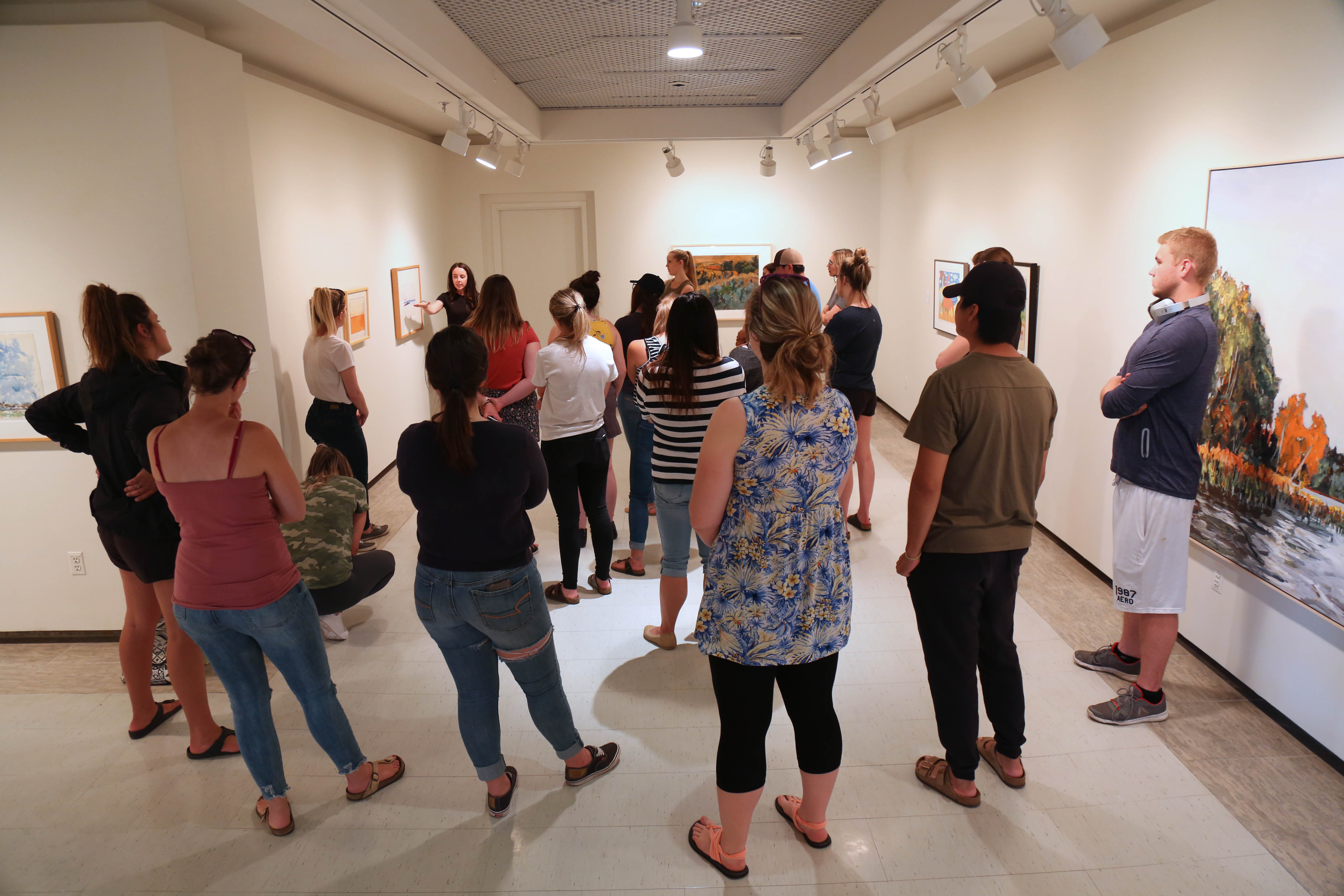
- Seminars: Groups of up to 20 students can access works of art from the USask Art Collection—numbering over 6,000 works—for examination and discussion. Visits allow students to view the works closely and engage in discussion. To arrange this possibility, please contact the University Art Collection at art.galleries@usask.ca or 306-966-4571.
- Tours: In addition to self-guided tours, we offer custom in-gallery curatorial tours for classes and groups of up to 30. Should the group exceed 30, discuss with gallery staff to be better accommodated. To arrange this possibility, please contact Leah Taylor, Curator, at leah.taylor@usask.ca or 306-966-4571
- Exhibition Development: Faculty may propose an exhibition development project as the focus of a course (normally graduate level) by working with gallery staff to identify a body of work from the collection that suits their learning goals.
- Assignments: We can assist you in developing inventive student assignments drawing upon exhibitions or collections.
- Research: Individual faculty or graduate students may book research sessions with works of art.
- Artist-in-Residence Seminars: The galleries can accommodate groups up to 25 students for hands-on learning and/or art sessions either within our own spaces or those of appropriate partners (e.g. The Gordon Oakes Red Bear Student Centre, The Digital Resource Centre in the Murray Library, your own classroom).
- Events: We offer artist talks, tours, films, scholarly speakers and panel discussions each year. These events are alwasy free and open to the public. To stay updated, sign up for our e-newsletter, follow us on Instagram or Facebook, or visit our Programs and Events page.

